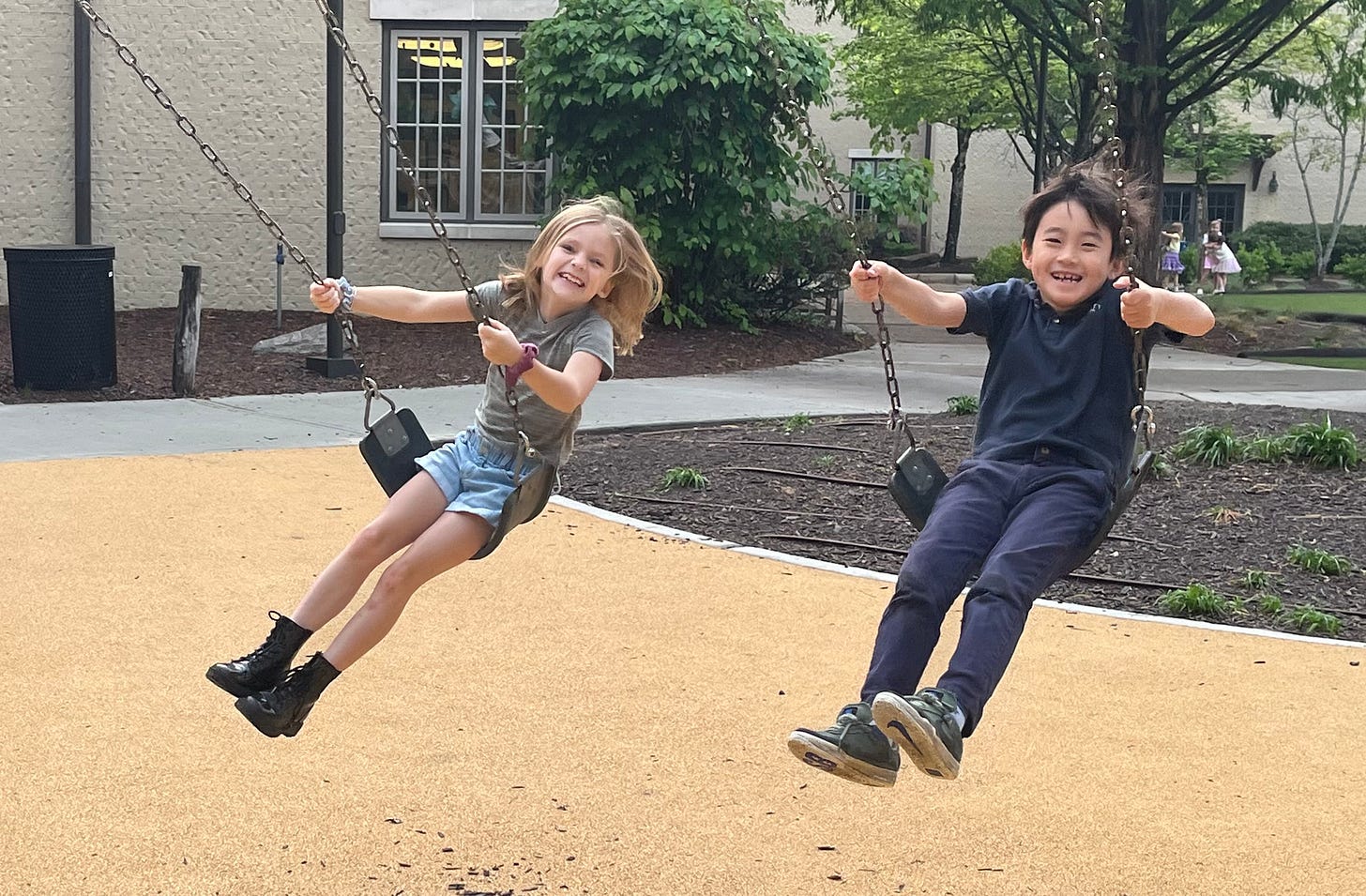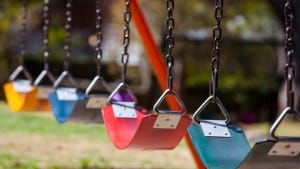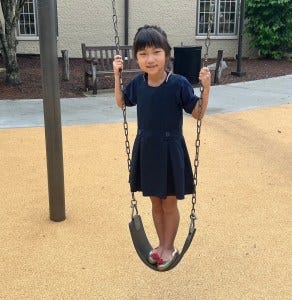In the 1970s, my siblings and I played on the same swing set at my elementary school that my mom had used back in the 1950s. Those swings endured for decades, staying in place until 2005 when they were removed. Everyone loved them. Even during my early years as a teacher in Washington, DC, there was a swing set on the blacktop playground. The swings were always occupied, with students eagerly waiting their turn to soar, show off tricks, and even jump off from the highest point. Yes, jump off, and learn how to land safely, like a stunt person leaping from a moving vehicle. I was reminded of the same feeling, the same exuberance, the soothing rhythm of going back and forth, back and forth.
At some point in the early 2000s, it became standard for schools and parks to remove swing sets. Once a beloved fixture on playgrounds worldwide, they were now considered unsafe, unnecessary, and even a thing of the past, despite being a staple since the early 1900s.
Why do we need swing sets?
There are countless benefits to swinging for kids and adults. According to Boston College Psychology Professor, Dr. Peter Gray, "Children learn to balance, coordinate their movements, and assess risks while using swing sets, enhancing their physical and motor skills." Think about your early days on a swing. You had to synchronize your arms and legs as you learned to pump the swing, allowing you to go higher and higher. Along with coordination, incredible core strength is also needed and can be enhanced.
There can't be a swing for every child. Therefore, students learn to take turns, problem-solve, and negotiate so they can all have a chance to soar. This can be difficult, but if we as adults can step back, monitor from a distance, and be patient, students WILL figure it out. We must resist the temptation for the "quick fix" and allow students to struggle in making their own rules for fair play.
Swinging is a fun form of EXERCISE. Along with strengthening multiple muscle groups, including the arms, legs, and core, swinging also enhances proprioception, which provides awareness of where our body parts are, even with our eyes closed. Remember tire swings? We could swing AND spin. Spinning in circles is an essential activity to help children find their center and coordinate movement on the two sides of their bodies. In a Penn State Extension post, "the centrifugal force experienced on things like merry-go-rounds activates the fluid-filled cavities in the inner ear. These sensors tell the brain the orientation of the head, which develops grounding and sustaining attention to task." Kawar, Frick, and Frick (2005) It continues, "The vestibular system controls a person's balance, posture, gaze stabilization, and spatial orientation. It also impacts impulse control (Angelaki and Dickman 2017).
When all of these senses are working in concert, the outside play on swings is a clear benefit for setting kids up to be successful in the classroom.
It's no secret that playing outdoors significantly boosts mental and emotional health in children. Swinging reinforces this phenomenon. The rhythmic motion of swinging can calm nerves, reduce anxiety, and even improve sleep, particularly for children with sensory sensitivities, ADHD, or autism. Furthermore, the rhythmic motion of swinging has been shown to soothe and relax children. It can act as a natural stress reliever, much like being swung in the arms of a parent, decreasing anxiety and improving a sense of well-being.
According to Dr. Josh Axe, certified doctor of natural medicine, playing outdoors on swing sets is not only fun and calming, but research demonstrates it can also boost cognitive development, language and communication skills, and even academic performance. That's a definite win for the swings!
Many argue that swing sets are too dangerous or risky for children. I counter that argument by stating that risky play is lacking in today's society. Instead of deterring children from climbing trees or swinging on swings for fear of getting hurt, encourage calculated, risky play. Children need to engage in activities with elements of challenge and potential risk. It fosters self-confidence, resilience, problem-solving, and risk assessment skills. While it's crucial to supervise children and ensure their safety, allowing them to explore and take calculated risks can have a positive impact on their growth.
For all the benefits mentioned above, WE NEED TO BRING BACK THE SWING SETS!






